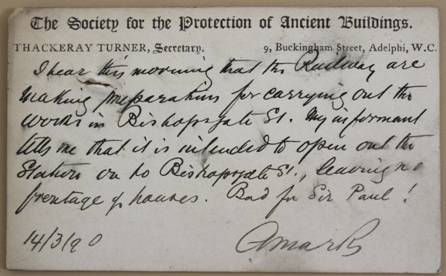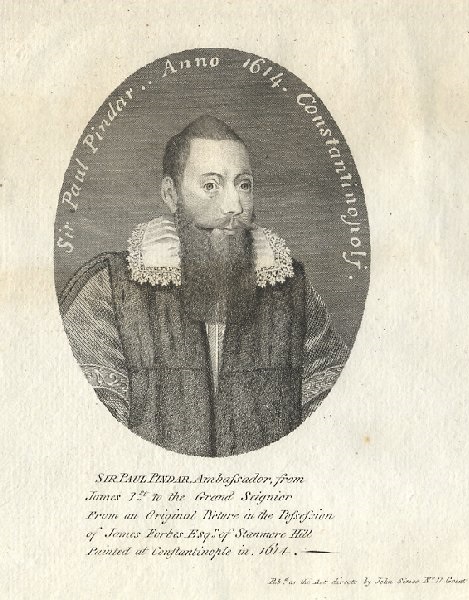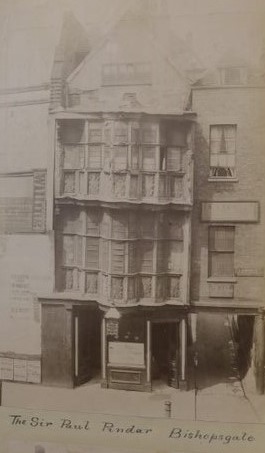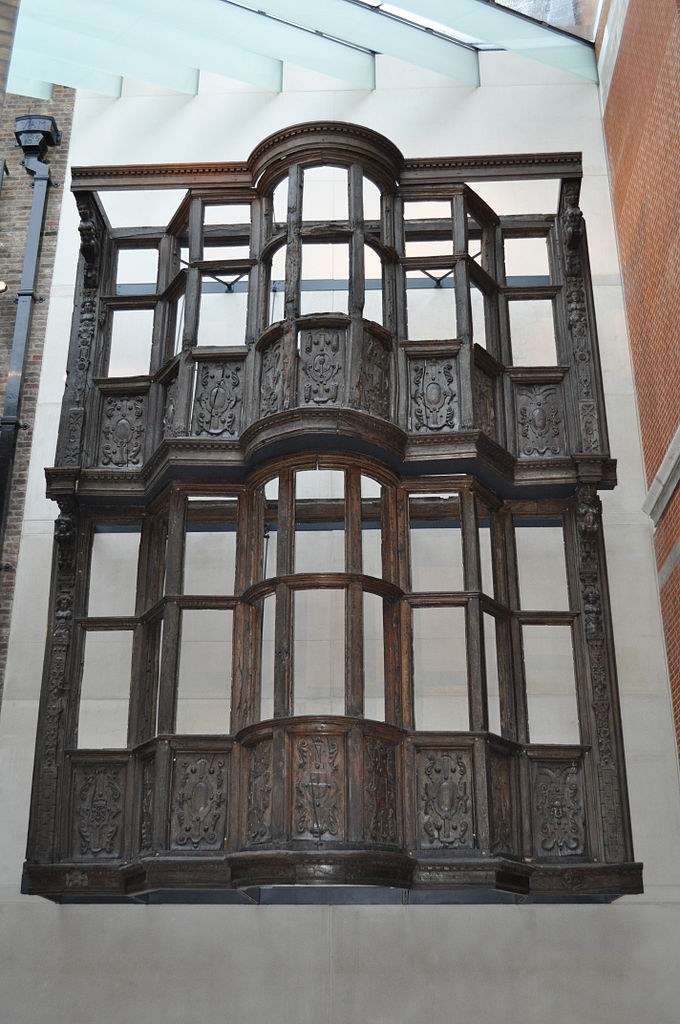This postcard dated 14 March 1890 is addressed to Thackeray Turner (1853-1937), the SPAB’s secretary. It refers to the upcoming railway construction works on Bishopsgate, in the City of London, which threatened the demolition of houses in the area, among them the late-16th century structure once the home of the merchant and diplomat Sir Paul Pindar (1565-1650).

Sir Paul Pindar was a wealthy merchant and the ambassador at Constantinople (now Istanbul) from 1611. He was knighted in 1620 by James I and entertained illustrious guests at his Bishopsgate mansion, including foreign ambassadors. Typically for the period, the depth of the house was more substantial than might appear from its street frontage, and many of its rooms were richly decorated in panelling and plasterwork.


The building was converted into a public house and smaller lodgings later in the 17th century, having survived the Great Fire of London in 1666, but its impressive three storey oak façade remained intact despite the growing pressures of population and business in the area. When its structure was threatened in 1890 with the expansion of Liverpool Street Station, a preservation campaign was launched and the SPAB was closely involved. One keen supporter’s letter to the Standard newspaper was published on 4th September 1890:
‘Considering the boasted aestheticism of our age, the enormous sums spent in erecting by the thousand monotonous reproductions of Greek ornaments, and the fact that this is the last remaining example of ancient timber architecture in the City - it will be almost a national disgrace if so picturesque a building, with its bold yet delicate carving and graceful outlines, should be allowed to go to the housebreakers.’
 Though the property was demolished in 1890, the façade (of the upper stories) were spared and moved to the Victoria and Albert Museum, South Kensington, where it remains on display to this day in the Medieval and Renaissance Galleries.
Though the property was demolished in 1890, the façade (of the upper stories) were spared and moved to the Victoria and Albert Museum, South Kensington, where it remains on display to this day in the Medieval and Renaissance Galleries.
In his recent book, The Creeping Plague of Ghastly Facadism, our neighbour The Gentle Author uses Paul Pindar’s house as perhaps the earliest existing example of facadism, a current architectural trend in this area of London. In his preface he quotes the SPAB’s founder William Morris in 1890, the year the building was demolished:
'The value of these building has more than one side, they have many parts, and we are unable to discriminate between the value of one part and another. If we are asked what side of them, what part of them, we want to preserve, we must our only possibility of preserving them at all is to preserve them whole as they are.'
The SPAB archive is one of the oldest collections of material wholly dedicated to buildings conservation. Please help us to keep access to the archive free for everyone and make a donation to support the archive.
Image credits: Sir Paul Pindar, engraving by WT Fry from a drawing by Thomas Trotter, via wikicommons. Paul Pindar's House at the V&A, credit K.B. Thommpson via wikicommons. Other images from the SPAB archive.
